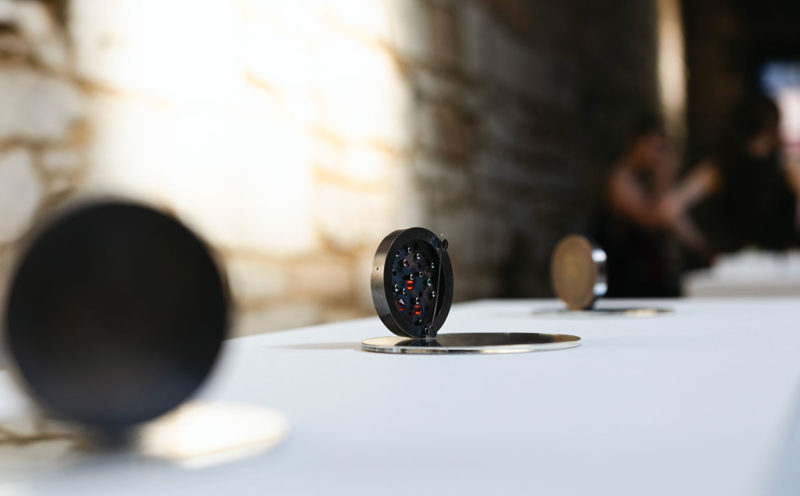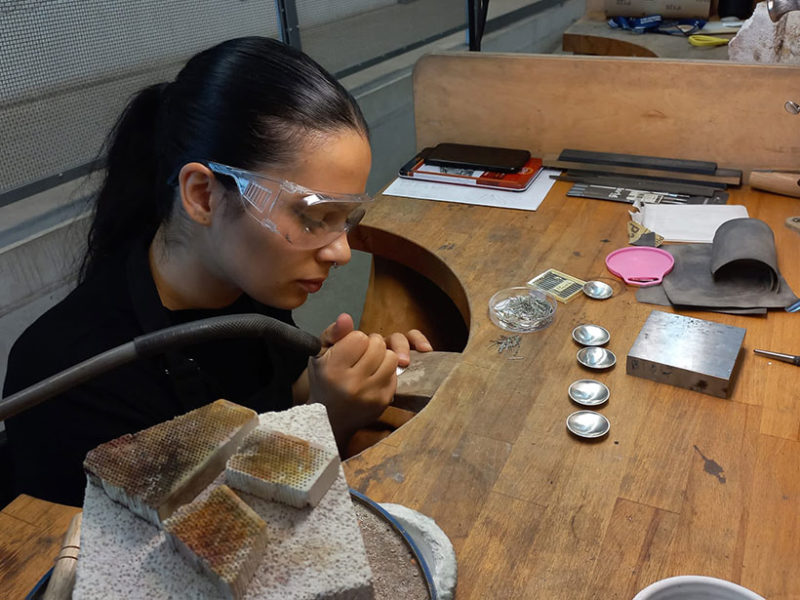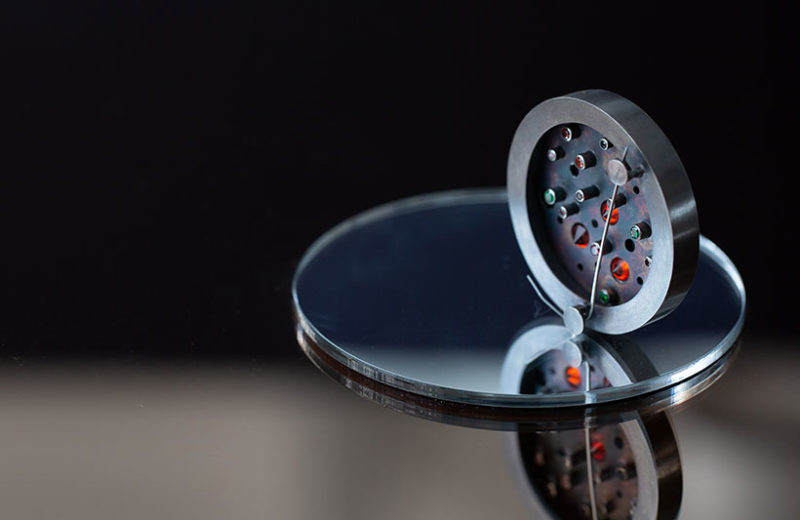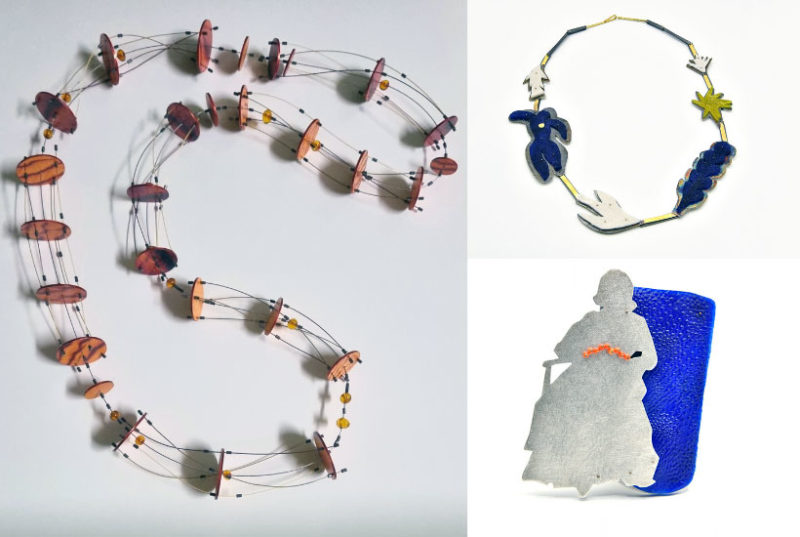Lorenza Bacino speaks with two jewellers from the Padua Gold School to find out more about this historic goldsmithing movement…

Words © Lorenza Bacino
The city of Padua is no stranger to beautiful things. Home to the Scrovegni Chapel with its Giotto frescoes, the medieval market hall – the Palazzo della Ragione – as well as an ancient university where Galileo taught and its proximity to Venice, all make Padua an exciting destination in its own right.
Padua’s frescoes have UNESCO World Heritage status, but did you know the city also has a rich tradition in artistic jewellery going back to the late Middle Ages and early Renaissance?
Lorenza Bacino visits the Padua Gold School and speaks to two of the jewellers here. You can read the full story of the school and two more interviews in the latest issue of Italia! magazine, out now!
Interview with Alice Biolo
Alice Biolo (b.1999) is the youngest jewellery designer from the Padua Gold School at only 25. She was born and brought up in Padova until age 19 when she moved to Yorkshire, where she arrived to learn English and subsequently stayed on.

Biolo ended up at the Glasgow School of Art, Silversmithing and Jewellery Department for her degree course, and has been there for the past five years.
She exhibits regularly both nationally and internationally, including in Rome, Venice, Milan, Guardiagrele, as well as in Padua as a student. Maria Rosa Franzin and Graziano Visintin were her teachers.
“I loved the Selvatico and it’s in my heart”, she said. “At 13, my cousin persuaded me to sign up as I loved to draw. I fell in love with goldsmithing after making a ring and this decided my future.
“I was so lucky to have them as teachers. When I got to Glasgow, I realised how privileged I had been and how much knowledge I carried with me from them. I studied with world-renowned expert gold workers. That is what I got from the school. It served me well for my future.
“Visintin taught me the basics of metalwork in the lab and Maria Rosa helped me with jewellery design. I learned how to understand the message I wanted to transmit with my piece and how to find inspiration in the design process, how to use abstraction, the lines, geometry, even the colours, using enamel.
“We used the ‘tavola tecniche’ – technical tables – basically a giant piece of A3 paper to design. It’s a very traditional approach, containing all the geometrical details and correct measurements that we needed to design. It was so helpful by the time I got to Glasgow as I still use this method when I got to uni.
“I sketched everything and it’s something I learned at the Selvatico. I had so much knowledge and advantage compared to the newbies coming onto the course who had never done anything like this before.”
Biolo defines herself as a ‘contemporary narrative jeweller’ as her pieces always have a theme and a story. She uses a lot of silver as it’s less expensive, and adds stainless steel, lead and semi-precious stones such as red garnets or citrines.

“I love brooches too. They are versatile pieces to make, like a blank sheet. You can do so much with them in terms of how you wear them and use them. The brooch works perfectly also as an object, not just something to wear. I think of them as live objects. The backs of my brooches are decorated and the front is plain. The back is important too as it’s hidden.
“I consider them objects that tell a story, like political party badges, they tell many things according to who wears them. I wanted mine to not to do that. Mine are more intimate and only the wearer understands the story behind it. My brooches are not public, they are closed.”
“I wanted to make some personal heirlooms like in Victorian times when they cut a piece of hair for a locket. These are my versions of memories. This is my collection that I am most attached to.”
Interview with Maria Rosa Franzin
Franzin studied at the Selvatico under Pinton and Pavan in the 60s, and went on to be a teacher of jewellery design there from 1986 until she retired in 2018.
“Pinton was very elegant in all ways,” she remembers, “very refined and he always wore a white lab coat over his suit as well as a very small gold ring with a tiny piece of coral on his little finger. He would encourage us to let initial images develop by themselves, from a blob of water colour for example.
“I took his instructions with me when I became a teacher. It was important for each student to find their own trademark and design during the process. Pinton would put an * next to an initial idea and write ‘to be developed’ and you’d go from there, together with him, until you found your design and created the object.
“There was collaboration between design and lab work at the heart of it all, and I felt a sense of completion. Your idea was developed with Pinton and then you’d move to the lab where Pavan would help with the actual metal work. Everything had to work together in synthesis.”

Franzin explains how students are taught the rudiments of metalwork. Beating, chiselling, scratching the surfaces in order to get to know the metal, smelting and soldering are learned from scratch. Welding is hard work, as is filing, carving, drilling. All this was combined with rigorous training and theoretical knowledge.
“We learned how to weigh the metals, then how to melt it by using a flame. We then learned how to work with liquid metal, as well as how to use the wire drawing machine, and the rolling mill. We learned how to transform the metal into the shape we needed to begin working using the embossing technique. It became a flat piece of metal from an initial lump of metal…. and then you learned how to make a bracelet from this thin strip of metal.
“At this time your whole body participates in the process. Nowadays it’s more mechanical and regulated, but we learned really technical things.”
There were so many phases before you got to the actual creation of the piece, she explains. This took years of practice. For Pinton, the lightness of the metal was fundamental. This is why the Padova school became so important; because the manual work and learning the basics of how to get the best out of the metals was just as important as the design process.
“We learned how to have empathy with the whole process with Pinton and Pavan and how to use geometry in our designs. Geometry could have ‘movement’ – the brooches had spheres, but geometry was the basis of everything. Things moved within the structure.
“I always wanted the students to be able to express themselves,” she explains, “and find the soul in their work. Teaching is hard as you need to respect the person you have in front of you. That is how I was taught, with respect for the person and for the ideas of the person.
“Painting has always been my source of inspiration in my jewellery making. Coordination between painting and the object is my symbol throughout. My signature.”
Want to explore the city beyond Padua Gold School? Read the blog, 48 hours in Padua
